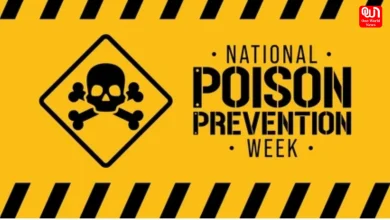Kaam Ki Baat: How effective is Janani Suraksha Yojana

Kaam Ki Baat: Janani Suraksha Yojana, a scheme that is saving thousands of lives
Janani Suraksha Yojana: Understanding the scheme and its impact
The initiative of One World News to explore the National Health Mission continues with the latest entrant – Janani Suraksha Yojana. Janani Suraksha Yojana (JSY), under the National Health Mission, Government of India intends to reduce maternal and neonatal mortality by addressing issues with both demand and supply of maternal healthcare services in the country. Poor women receive direct cash in their accounts under the program for institutional deliveries and for accessing antenatal, and postnatal care. ASHA workers are also given cash incentives for connecting poor women to institutional healthcare services.
The official website of the National Health Mission describes JSY as a safe motherhood intervention, which is implemented with the objective to decrease the number of maternal deaths by promoting institutional delivery among pregnant women. The scheme is under implementation across all states with a special focus on the Low Performing States.
The women-favoured plan was started on 12th April 2005, with a focus on pregnant women with a special dispensation for states and UTs that have low institutional delivery rates. The states and UTs are divided into the low Performing States and the High Performing States according to the number of institutional delivery rates. Those who had 25 % or less institutional delivery rate, were termed low performing states and UTs and those who had more than 25 %, were termed as High Performing states and UTs.
Uttar Pradesh, Bihar, Madhya Pradesh, Uttarakhand, Chhattisgarh, Rajasthan, Jharkhand, Odisha, Assam, and Jammu & Kashmir are classified as low performing states or UTs. The rest of the states are the High Performing States.
There is no denying the fact that the states and UTs have witnessed a phenomenal rise in the institutional deliveries in the last 15 years since the launch of the scheme. As per the NFHS (National Family Health Survey) 4, the percentage of institutional birth increased from 38.7 % to 78.9 % during 2005- 2016. NFHS-5 data is yet to come, which will give us more recent data (hopefully a better one) as it was conducted in the year 2018-19.
Lim et al. (2010) conducted the first formal statistical impact evaluation of JSY across all the states and Union Territories. It found out significant positive effects of the Janani Suraksha Yojana on institutional delivery, antenatal care, skilled birth attendance. During their evaluation, they found a comforting effect that is a significant decrease in prenatal and neonatal deaths.
The Maternal Mortality Rate (MMR) has also been continuously decreasing since the launch of this scheme, aided by other schemes aimed at reducing the MMR. As per the Union Minister of Health and Family Welfare, Dr. Harsh Vardhan, the maternal mortality rate ration has declined from 122 in 2015-17 to 113 in 2016-18 (7.4 % decline).”
The Health Minister in the context of the data released by Registrar General of India, earlier this year, said that the country has been witnessing a progressive decline in the MMR from 167 in 2011-13 to 130 in 2014-16, 122 in 2015-17 and 113 in 2016-18.
According to a report by UNICEF, the number of women and girls’ death due to issues related to pregnancy and childbirth has dropped, from 1,03,000 in the year 2000 to 35,000 in the year 2017. A total of 55 % decrease in the number since in 17 years.
Looking at the reducing trends of maternal deaths, it seems that India is on track to achieving the Sustainable Development Goals of 70 deaths per 1 lakh births by the year 2030.
Read more: ‘National Ambulance Service,’ Do we have enough ambulances for everyone?
Maternal Death
When a woman dies during her pregnancy or within 42 days of termination of pregnancy, irrespective of the size and duration of the pregnancy, from any cause other than incidental and accidental is termed as the Maternal Death.
Researchers believe that postnatal care is still not progressing
Shareen Joshi and Anusuya Sivaram, two researchers at the Georgetown University, US, analyzed District Level Health Survey data. They found that the incentive structure of the Janani Suraksha Yojana for ASHA workers is responsible for the lack of progress in the percentage of women benefitting from the postnatal checkups within the 48 hours of delivery. They say that the benefits are not reaching to every poor woman.
Aparajita Gogoi, the national coordinator of the White Ribbon Alliance, believes that a lack of sufficient infrastructure and cultural practices play a role in the lack of progress.
The argument given by them indicates that the health facilities are not moving at the same pace to cope with a sudden spurt in demand for the institutional deliveries due to the Janani Suraksha Yojana. This could be the reason which is preventing progress in the post-natal care amongst the new mothers.
Have a news story, an interesting write-up or simply a suggestion? Write to us at info@oneworldnews.com







